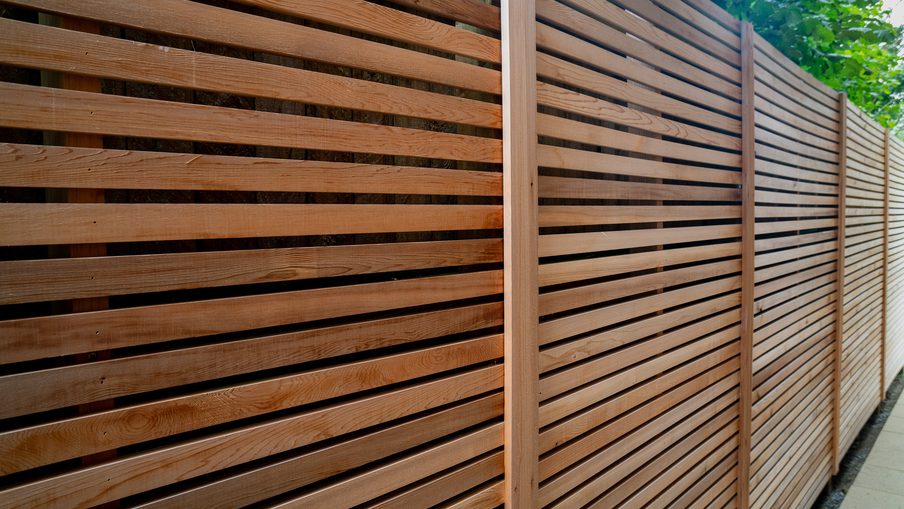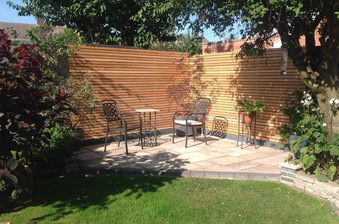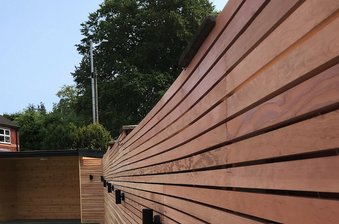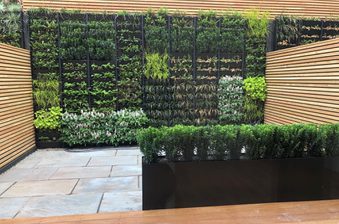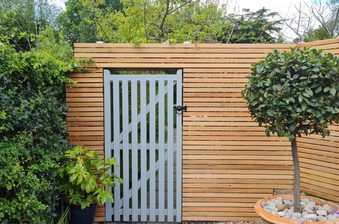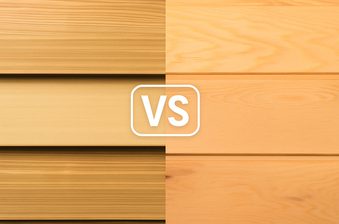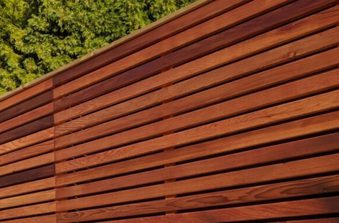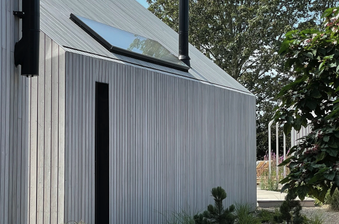Just as a quality timber fence bestows a multitude of benefits to your garden – privacy, theming and a beautiful, natural look – a dilapidated wooden fence immediately downgrades any space.
To create the perfect perimeter for your property, here's our guide to the best types and styles of wood timber fencing.
The best types of wood for fencing
Britain’s climate throws a fair few challenges the way of our fences, so the best timbers for fencing are those with plenty of natural durability against natural forces of decay – water, insect and fungal resistance. This isn’t an exhaustive list by any means, but you can’t go wrong with any of the woods mentioned below!
1. Western red cedar – reddish-brown beauty and top-drawer durability
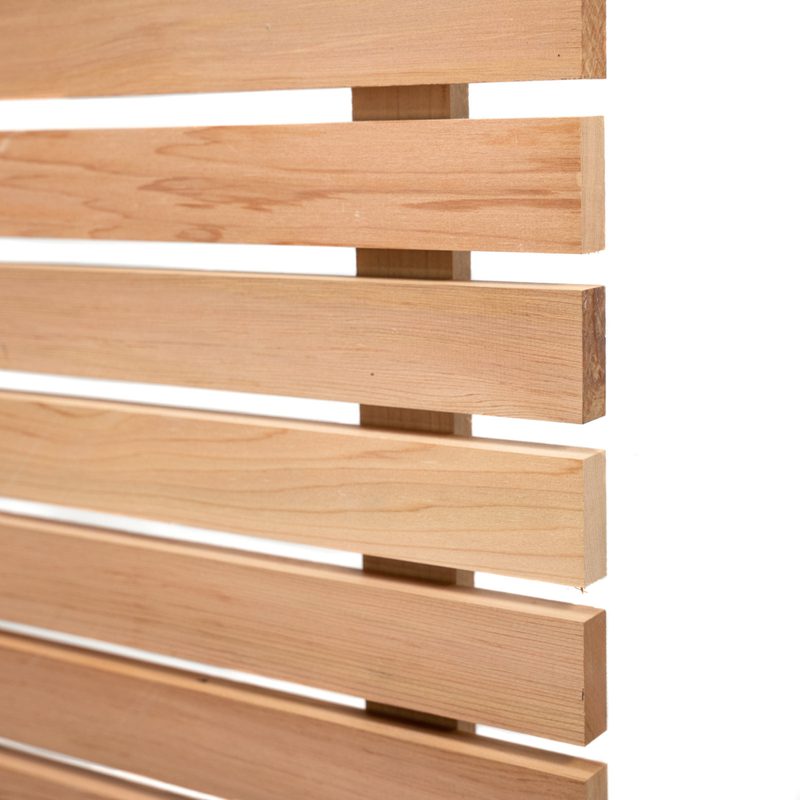
With its warm, on-trend good looks, resistance to warping and shrinking and naturally-occurring repellent oils, cedar should be right at the top of your list of fencing timber contenders.
Beautiful, durable and with astonishing longevity, we’d challenge you to find a property where cedar's alluring red, pink and brown tones aren’t right at home!
The resins contained within the wood give it natural resistance to the most adverse of weather conditions and fungal threats.
Cedar also smells fantastic, which can’t be a drawback on those relaxing summer days in the garden, can it?

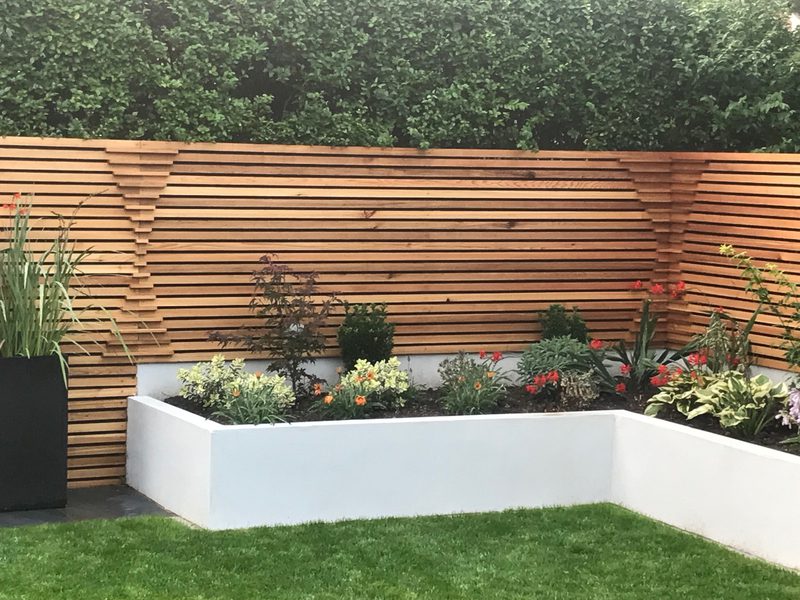
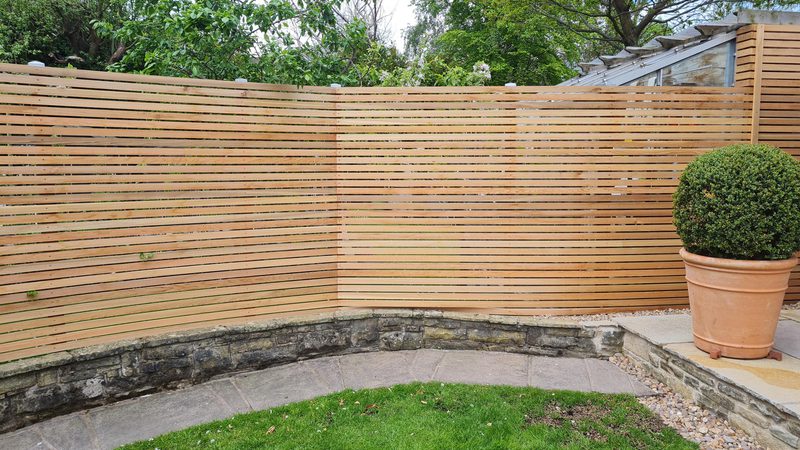
Western Red Cedar 18 x 45mm slatted fencing, from a recent project we worked on.
These incredible benefits do come at a slight premium, though – be prepared to pay a moderately higher margin for your western red cedar fencing than you might for other types of timber, especially those you'll pick up from home improvement stores.
2. Siberian Larch – classic golden yellows with exceptional exterior durability
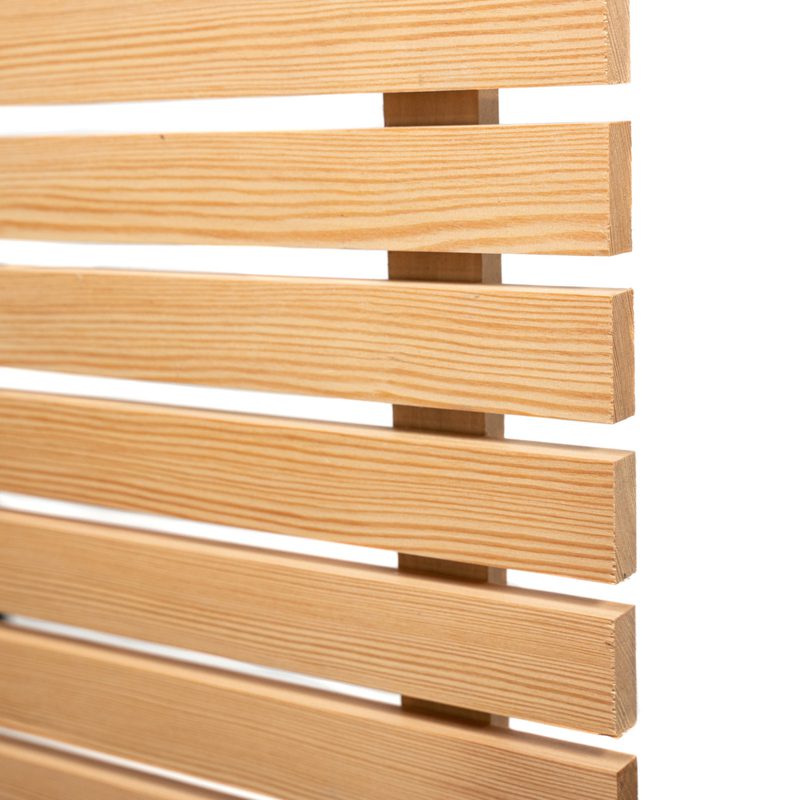
Siberian larch is up there with western red cedar as one of the most popular, go-to choices for home improvers looking to create a beautiful, design-led boundary for their property. Larch also typically comes in at a slightly cheaper price point.
Native to the sub-zero climate of Siberia, it should come as no surprise to learn that larch is a very sturdy, stable species with great resistance to decay – perfect for fencing. Those gorgeous pale yellow-to-golden brown hues are just a bonus!
Larch comes in two grades: unsorted and sawfalling. The latter has more knots, and therefore typically comes in at an even lower price.
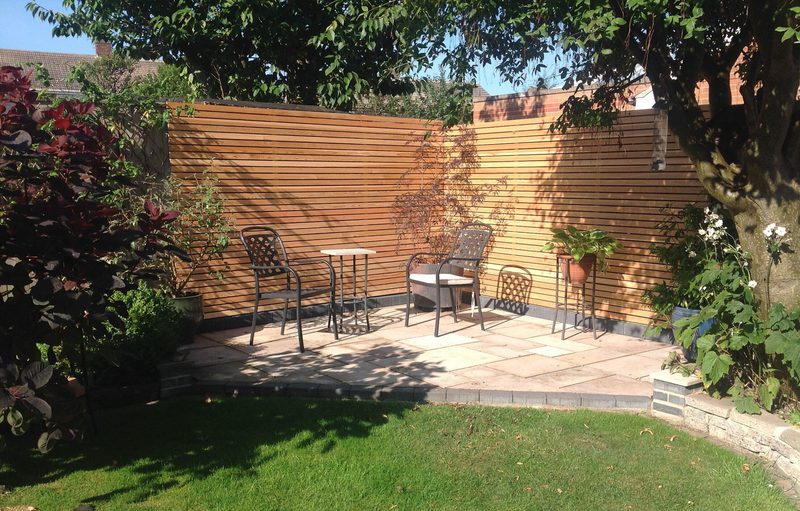
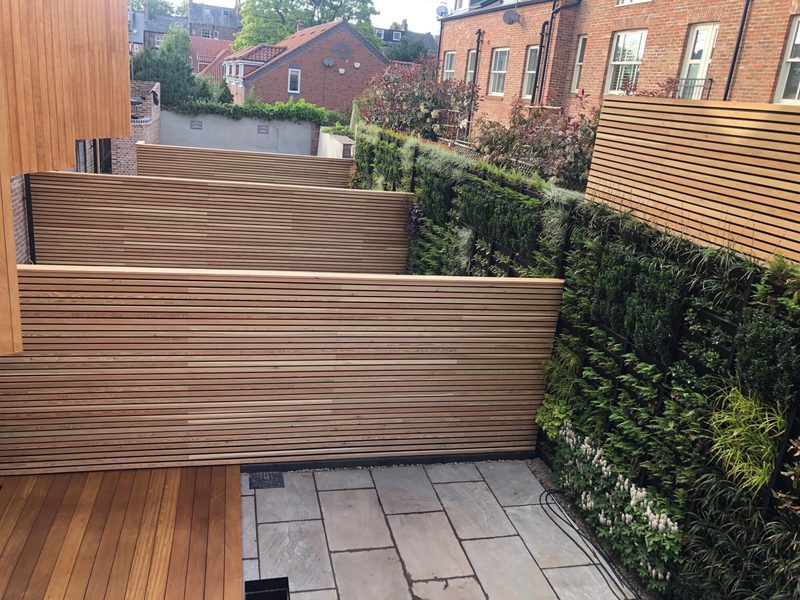
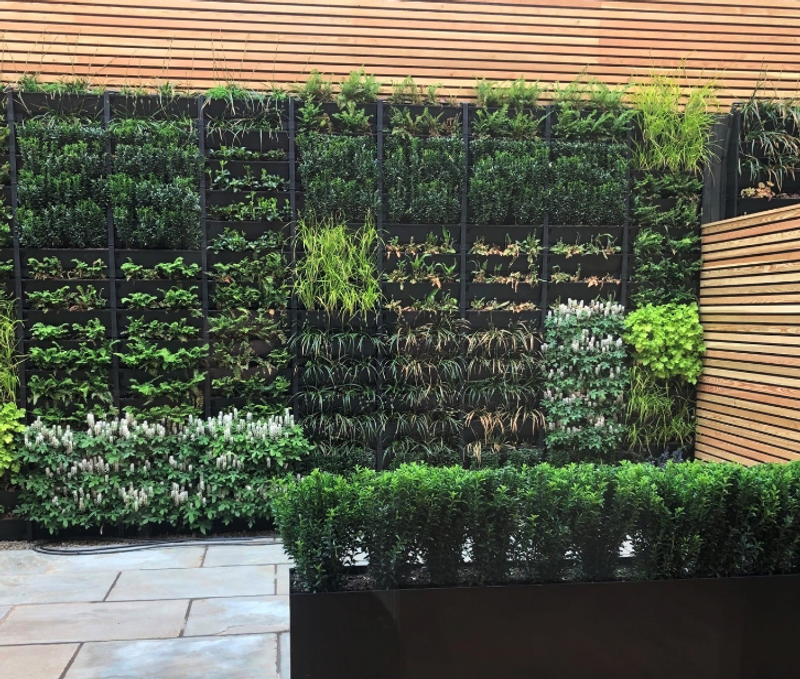
A garden gate and fencing in Siberian Larch.
Similar to western red cedar, Siberian larch requires very little maintenance once installed. It can be left unfinished to achieve a traditional silver finish, or given a lick of UV preservative to prolong its natural golden appearance.
3. Iroko – a tropical, high-performance hardwood
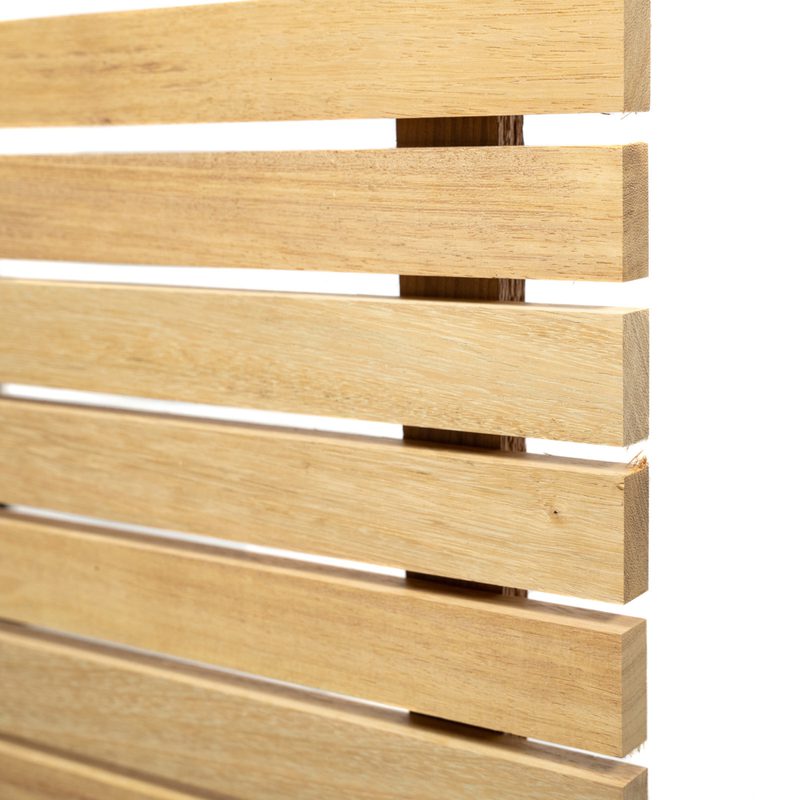
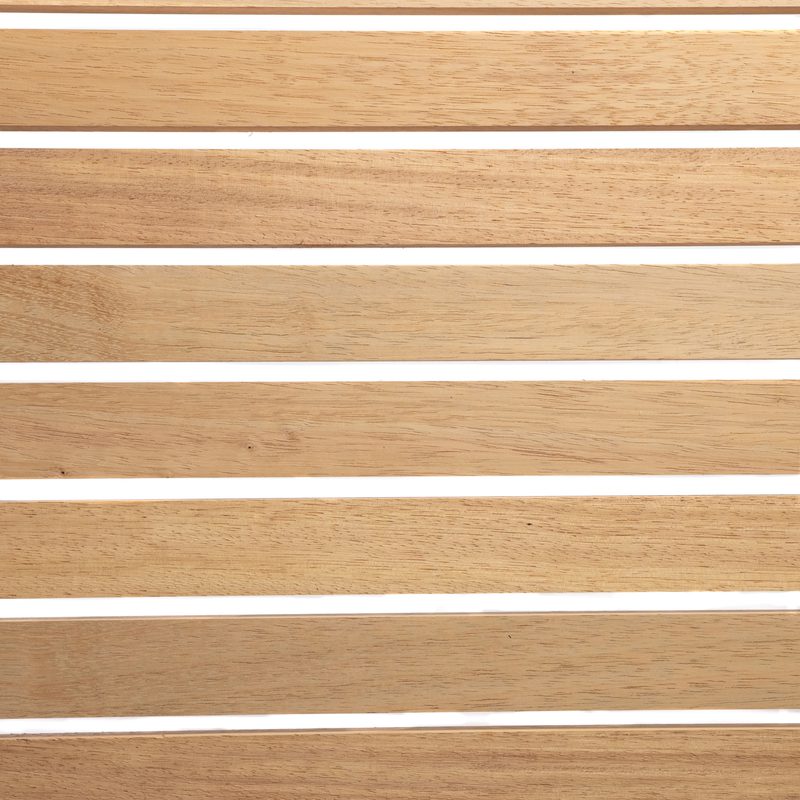
Also known as ‘African teak’ – so called because of its similar appearance and exceptional exterior performance – iroko is incredibly stable, durable and scratch resistant. Perfect in almost every way for a fence intended for a special outdoor space.
Its clean golden brown colour tends to slowly darken over time, making this exotic hardwood an increasingly popular choice amongst architecturally-minded home improvers.
Iroko comes in at the pricier end of the spectrum, so expect to be paying a higher price for hardwood fencing components. We’d say the species certainly repays itself many times over by providing your property with a high-performance, exotic-looking boundary.
African hardwoods like ioko and sapele can be treated with oil to guard against the bleaching effect of moisture and UV. This also gives the timber a rich glow, helping the grain of the timber to pop’
4. Douglas fir – light straw with hints of red and a wild, mixed grain pattern
Trade restrictions with Russia mean that stocks of Siberian larch are not quite as reliable as they once were! We'd recommend Douglas fir for some similarly-beautiful golden yellow hues.
Like all other species in this list, Douglas fir boasts natural resistance to moisture, decay and fungus – a great exterior all-rounder, with a wild grain pattern that bursts with character.

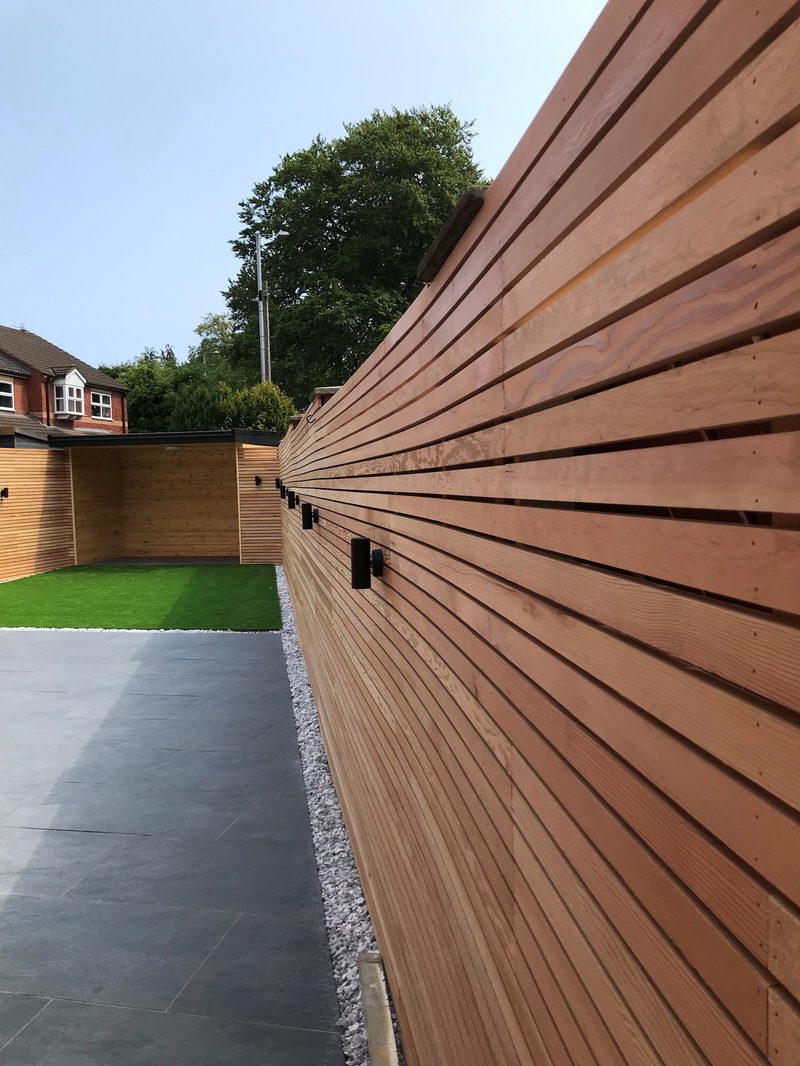
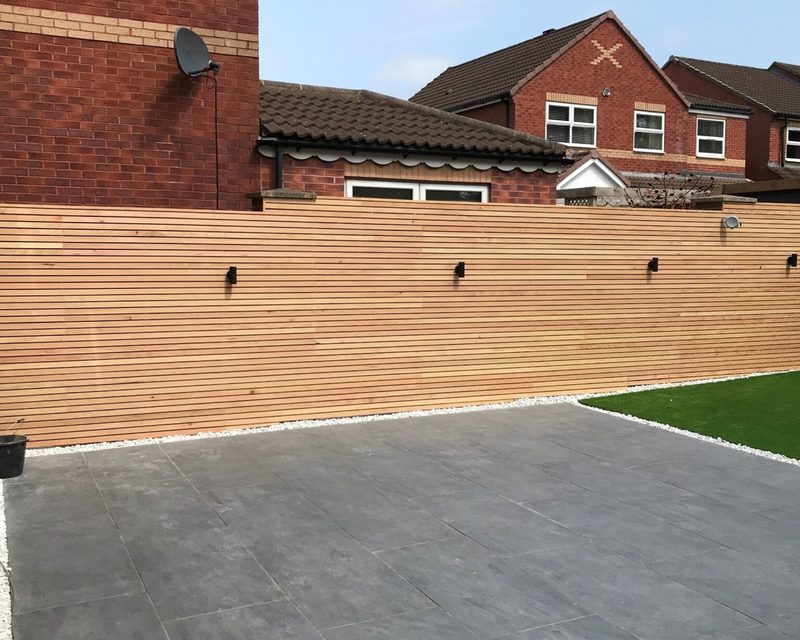
5. Thermo-Ayous – an exotic, durable and high-performance fence at a cheaper cost
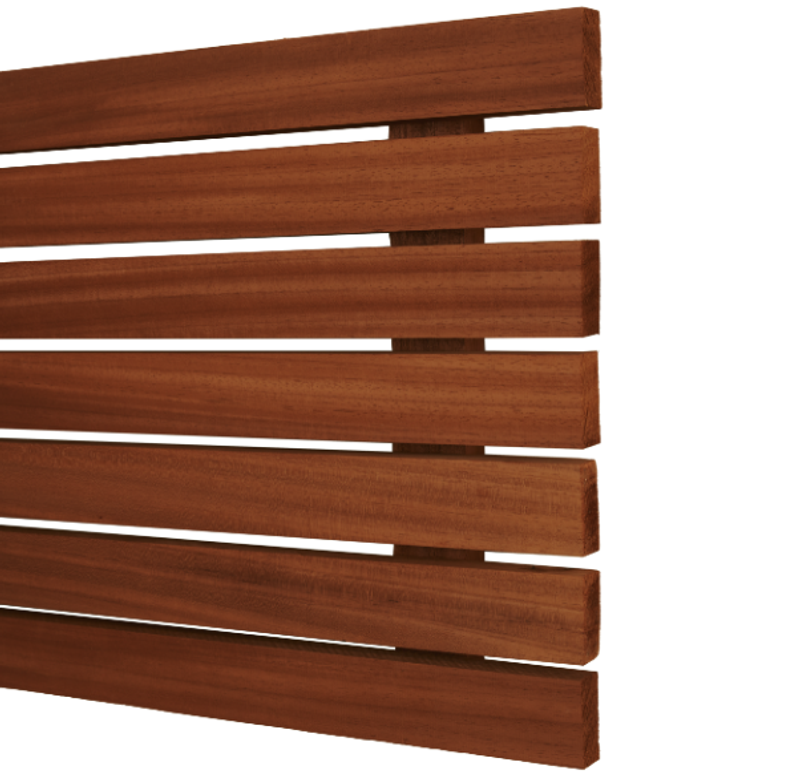
A timber species native to west and central Africa, when ayous is thermally modified it becomes a seriously stunning, stable and durable clear grade fencing timber.
Also known as African whitewood, obeche and abachi, this heat modification boosts ayous’ resistance to decay, providing added dimensional stability by increasing its hydrophobicity (repellence to water). The process also changes its original creamy white-yellow colour to a darker brown.
Another popular thermally-modified species to check out is Thermo-Nordic Pine.
Different styles and types of wooden fencing and fence panels
Fences can be broadly categorised as either ‘solid’ or ‘semi-solid’. Within these categories, there are a number of styles and types, each providing a different level of boundary marking and a different visual look (contemporary, traditional, decorative).
Slatted– a sleek, designer and wind-resistant look
Falling into the semi-solid category, there’s no arguing with the clean, contemporary style that slatted fencing effortlessly provides, regardless of the species chosen.
The 10mm gaps create shadows that cascade and change during the day in areas that would traditionally be shaded, helping to maximise the amount of natural light in your outdoor space – a smart, architectural touch. Slatted fencing can even be used to create a feature panel, or for creating themed spaces by acting as a divider.
Semi-solid fences such as slatted are less dramatic than solid styles, helping to create a more welcoming, airier and connected space. Particularly when installed horizontally, the slats provide a clear line for our eyes to pass across smoothly, elongating and adding the impression of size – a great design-led trick if you’re working with a smaller space.
One downside to slatted fencing that’s commonly touted is that it does not provide a desired level of privacy. Greater segregation can be attained by choosing a slatted fencing style that has wider slats (such as 90mm or 70mm, rather than the more popular 45mm).
This type of fence is also great for windy areas, allowing gusts to pass through.
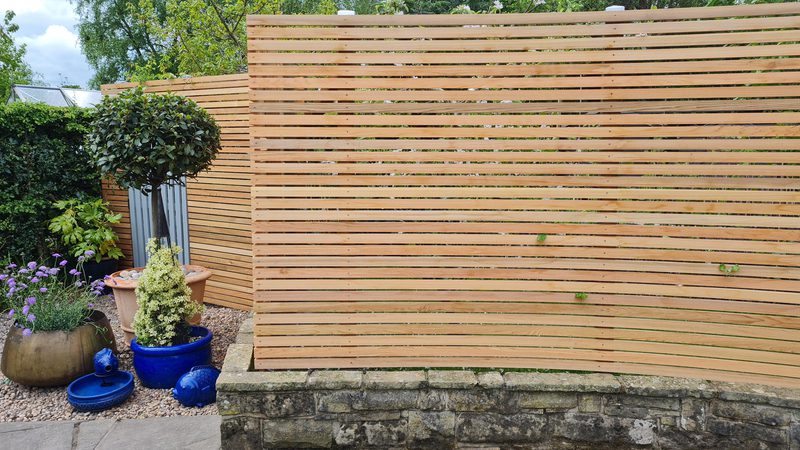
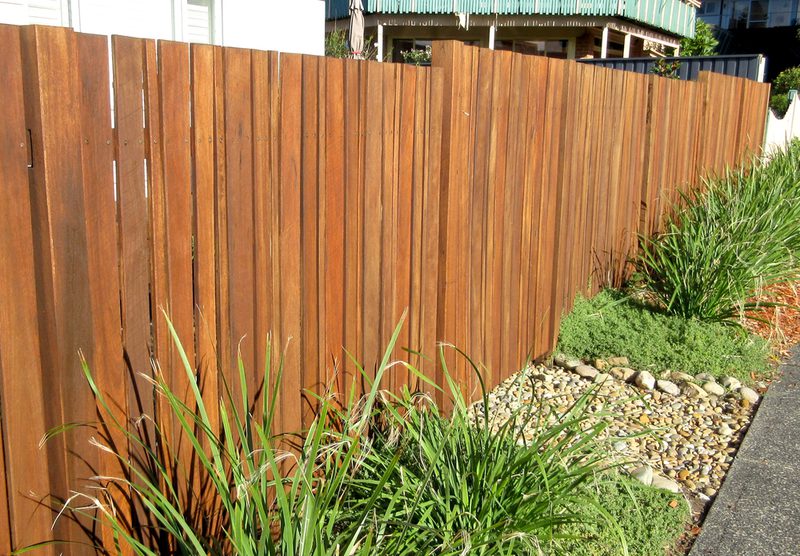
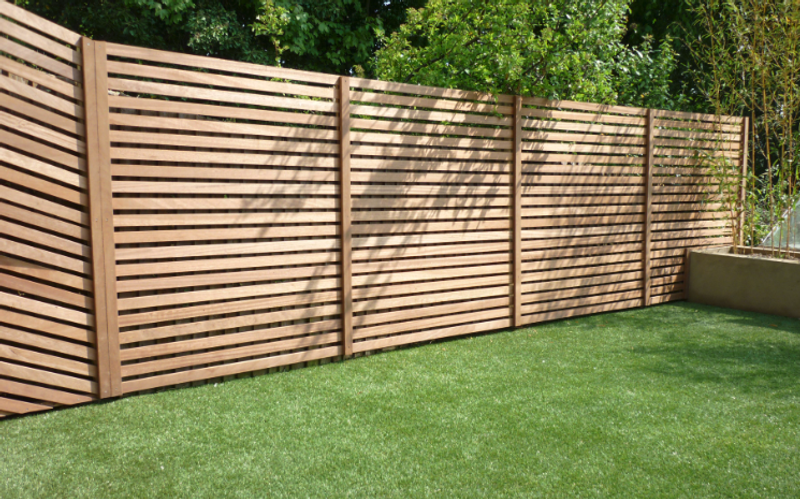
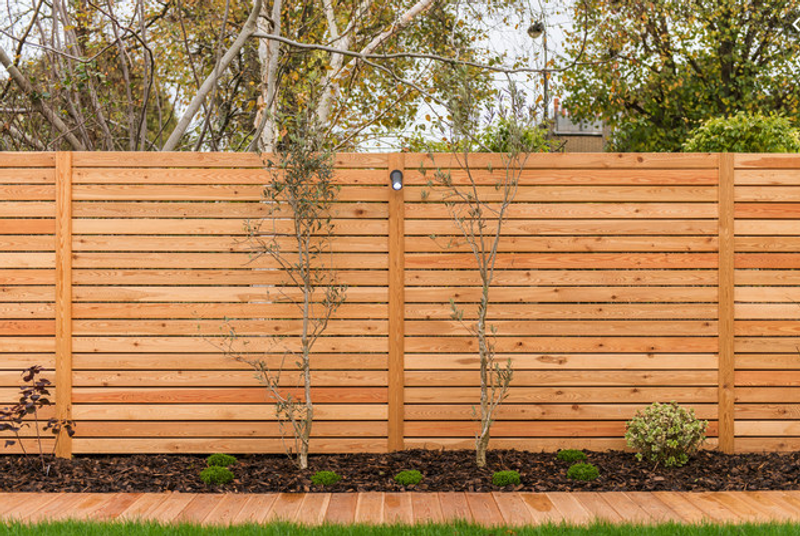
Closeboard – a robust, timeless solid fence style with optimal privacy
The most popular type of solid fencing is closeboard, also known as featherboard (or even featheredge). The boards are tapered and overlap vertically, providing no way of seeing through – the maximum amount of privacy.
Unlike slatted fencing, as the name would suggest, solid styles are manufactured without gaps. When installed to a height of 6ft, this style marks boundaries distinctly, keeps intruders out. It can also work particularly well for uneven ground.
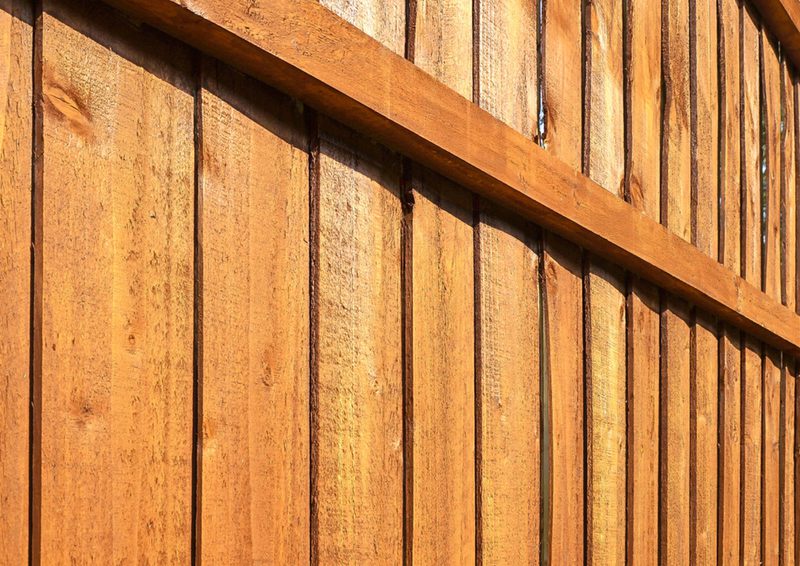
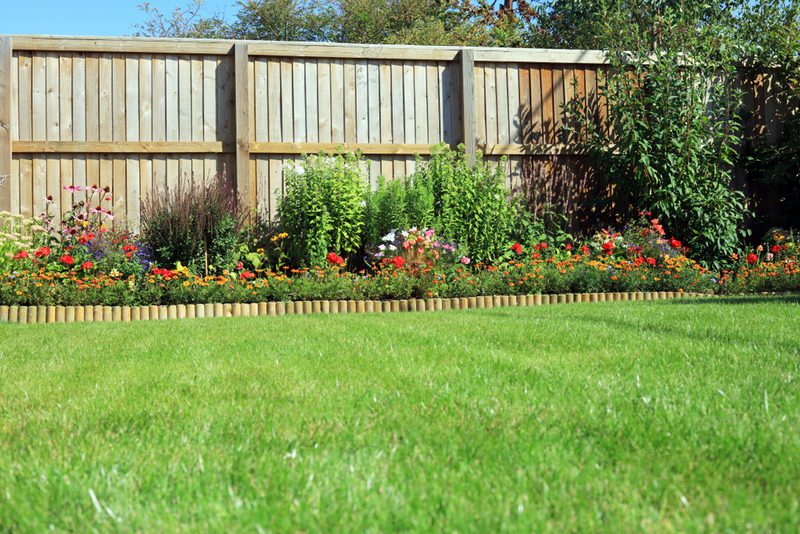
There’s a reason why solid fencing is ubiquitous across the UK. It has never gone out of style and never will – it’a a timeless choice that simply looks good and does the job, and can provide a traditional or modern look.
Of course, one downside to this type of fencing is that it can be susceptible to weather damage. If in an exposed area, repeated winds can cause stress on posts, as well as leading panels to look weatherbeaten a bit faster.
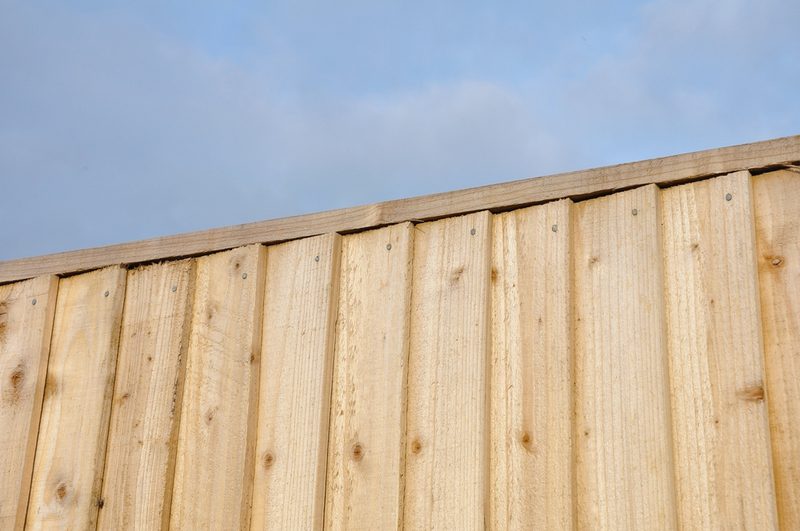
Overlap – a versatile, solid design with excellent privacy
Another popular type of solid fencing includes overlap, where horizontal boards are overlapping one another. This is available in waney-edge for a particularly rustic, characterful look, or straight for a more contemporary finish. Like closeboard, this provides a good deal of privacy and boundary marking.
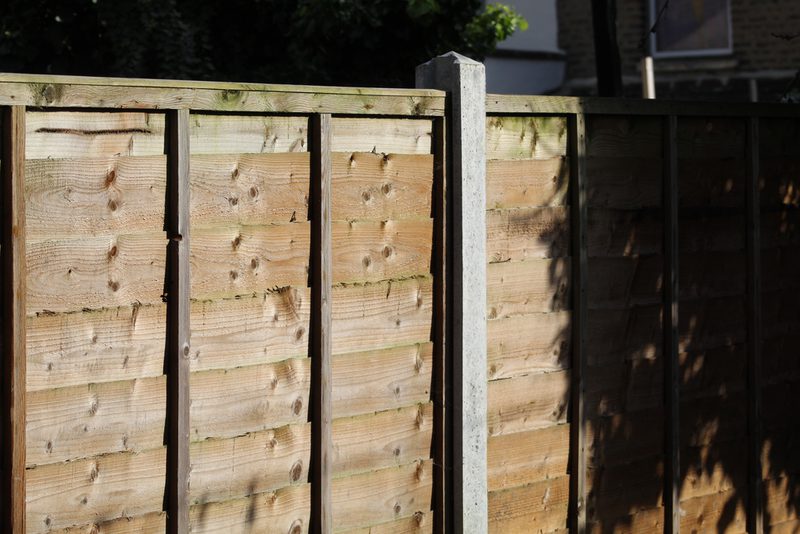
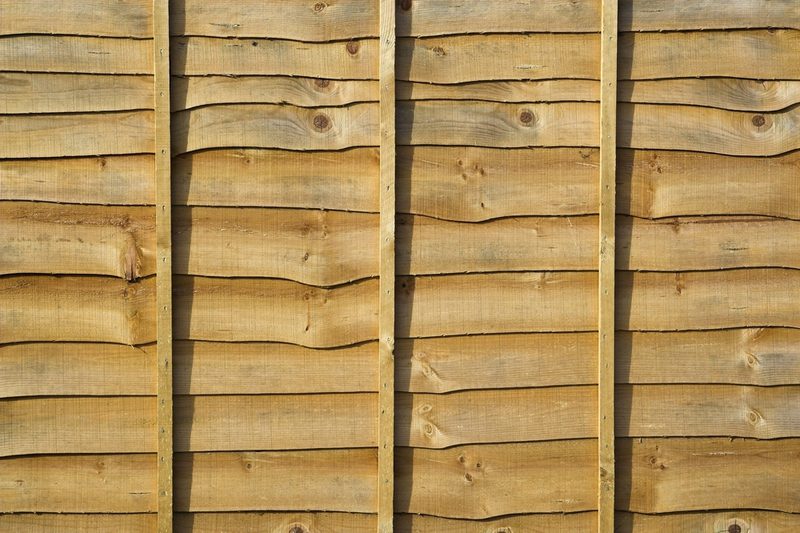
Hit-and-miss – a versatile, decorative and wind-proof style that offers good privacy
Also known as ventilation fencing, this type of semi-solid fence is manufactured to allow wind to pass through whilst not compromising on privacy. If you’re looking for a high level of boundary marking in a very exposed area, hit-and-miss is probably the one for you.
This is achieved by the slats being fixed alternatively on the front and back of a batten, so there are small gaps in between for gusts to pass through, relieving pressure on the panels and posts whilst still providing what looks like a solid-panel appearance.
Visually, hit and miss is versatile. Unlike with solid styles of fencing like featherboard, there’s no ‘bad side’, and hit-and-miss can find its home just as easily in a smart, minimalist urban outdoor space as well as a countryside, cottage-style garden (perhaps with trailing plants). For added decoration, you might even want to complete it with a lattice top.
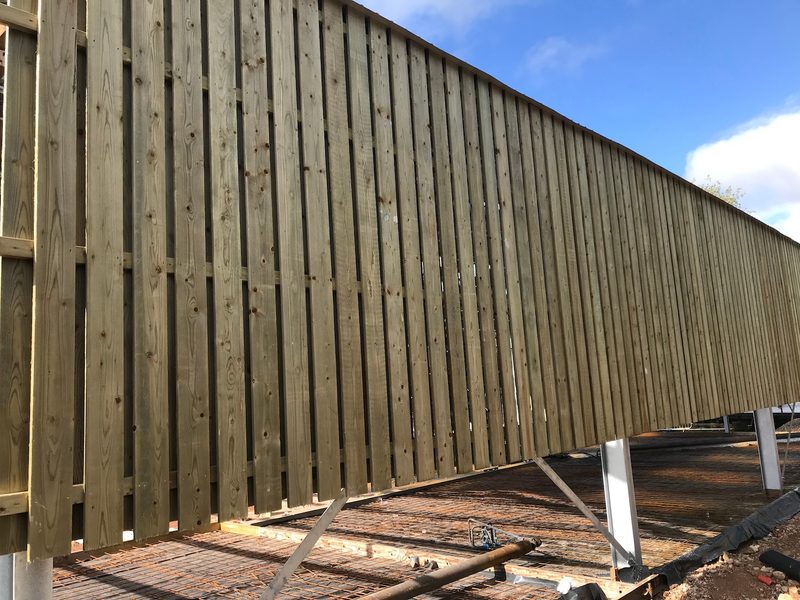
Picket – for something traditional and decorative
With its open spaced design, picket fencing offers little-to-no security, but is a smart, timeless way of marking out a boundary, particularly for the front of a property. They often have gates built in.
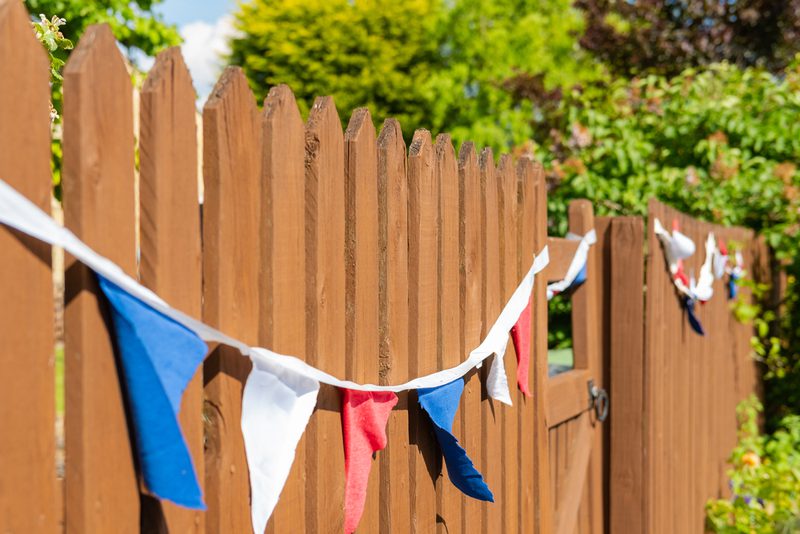
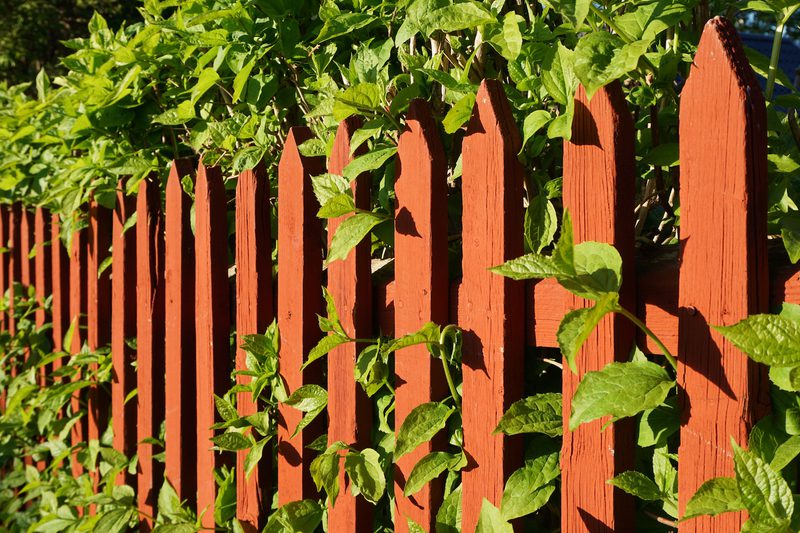
This isn't all, of course. There are several other decorative fencing styles that are less common, such as chevron and lattice fencing.
How high can I build my timber fence? Do I need planning permission?
The maximum height for a fence without requiring planning permission is 2 metres from ground level (just over 6 feet 6 inches). If the fence is next to a highway used by vehicles or a footpath of such a highway, the maximum height is 1 metre (just over 3 feet 3 inches).
To learn more, we've written a guide to fencing and planning permission in the UK.
How long does a timber garden fence last for?
The service life of a fence depends on a few factors: the species of wood you use, the style, as well as the quality of installation and the regularity of follow-up treatment.
A well-constructed, well-cared-for fence made of a quality species like western red cedar can have a lifespan of over 40 years. Cheaper styles of solid fence – such as those typically found in home improvement stores – can start to need replacing or repairing within 10 years, especially if you live in a windy area.
To ensure you get decades of service life from your timber fence, check out our guide to treatment and maintenance.
Start your fencing project today
We supply timber slatted screen fencing in a wide range of beautiful, versatile and highly durable species. We have over six decades’ experience helping home improvers, architects and designers across the UK to create the perfect perimeter for their property.
Whether residential or commercial, start your project by clicking the ‘Get in touch’ button below. You can also reach our expert team to discuss your fencing project through our contact page.
